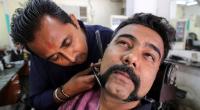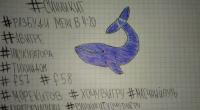 As adults, childhood cancer survivors have a 30-fold higher risk than the general population of developing common skin malignancies known as basal cell carcinoma, a Dutch study suggests.
As adults, childhood cancer survivors have a 30-fold higher risk than the general population of developing common skin malignancies known as basal cell carcinoma, a Dutch study suggests.
Compared to other adults, survivors had a more than two-fold higher risk of getting melanoma - the most aggressive and deadly type of skin cancer - and a more than seven-fold risk of squamous cell carcinoma, the second most common form of skin cancer after basal cell malignancies.
The skin cancer risk was greater for childhood cancer survivors who were treated with radiation, and increased further with larger amounts of skin exposed to radiation therapy, the study also found.
“Radiotherapy treatment for childhood cancer involves exposure to ionizing radiation that is able to cause damage in the DNA of cells,” said lead study author Jop Teepen of the Princess Maxima Center for Pediatric Oncology in Utrecht, The Netherlands.
“This property of ionizing radiation is essential in killing the cancer cells, but can also cause DNA damage to surrounding tissues that inevitably also receive some level of radiation exposure during radiotherapy, for example the skin,” Teepen said by email. “DNA damage can increase the chance of developing (skin) cancer later in life.”
Forty years after childhood cancer, 19 percent of patients treated with radiation as kids had one or more skin cancers, compared with an expected skin cancer rate of less than 1 percent in the general population, researchers report in JNCI: Journal of the National Cancer Institute.
When people with prior radiation therapy did get skin cancer, it was more likely to develop on areas targeted by radiation than on other parts of the body.
Researchers examined data on 5,843 people diagnosed with cancer as children between 1963 and 2001 who had survived five years or more. The most common childhood cancers in the study were leukemia and lymphomas, followed by tumors of the central nervous system and kidneys.
During the study, 259 childhood cancer survivors developed a total of 1,061 cases of basal cell carcinoma, there were 27 melanomas among 20 survivors and 11 squamous cell carcinomas among 10 survivors.
A total of 2,308 children with cancer, or about 40 percent, received radiation as part of their treatment regimen.
Factors other than childhood radiation therapy that were associated with the higher skin cancer risk for adult survivors included cranial radiation therapy, especially at a young age, and treatment with a group of chemotherapy drugs called vinca alkaloids.
The study wasn’t designed to prove whether or how childhood tumors or treatments used to attack these malignancies might directly cause skin cancer later in life.
It’s also possible that being more aware of their skin cancer risk led childhood cancer survivors to be screened more often than other people, resulting in higher skin cancer detection rates, the study authors note.
And, the risk may be a bit lower for kids treated for cancer today, said Kirsten Ness, a researcher at St. Jude Children’s Research Hospital in Memphis, Tennessee, who wasn’t involved in the study. Radiation fields are more carefully controlled in children to minimize the amount of normal tissue exposed than was the case when the survivors in the study were treated, she noted.
“Wear sunscreen and protective clothing when in the sun,” Ness advised childhood cancer survivors. “Check your skin, particularly in areas that received radiation.”


